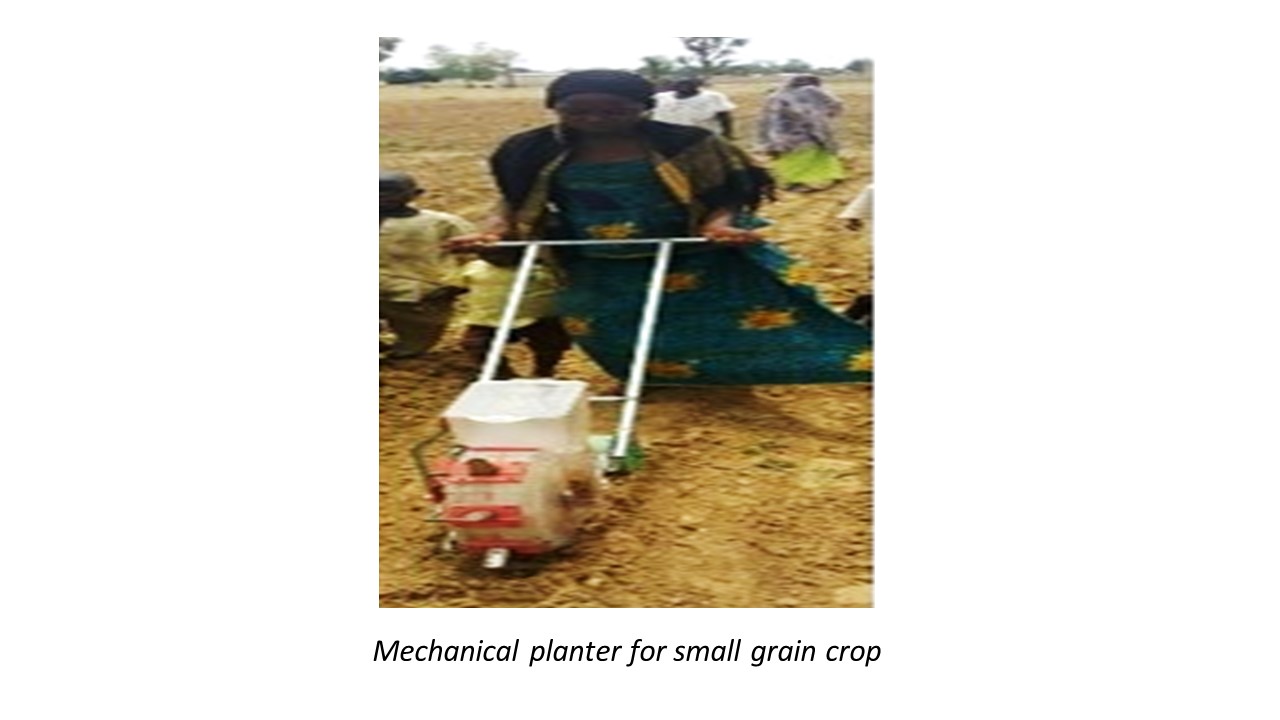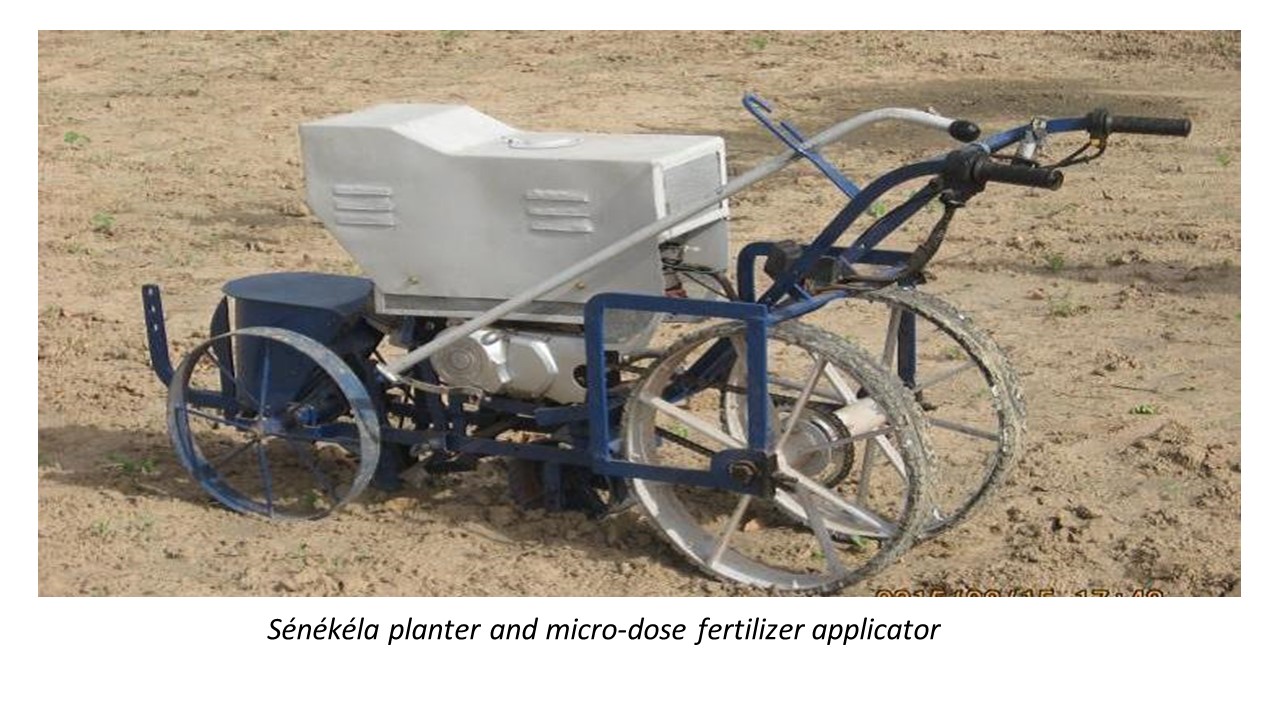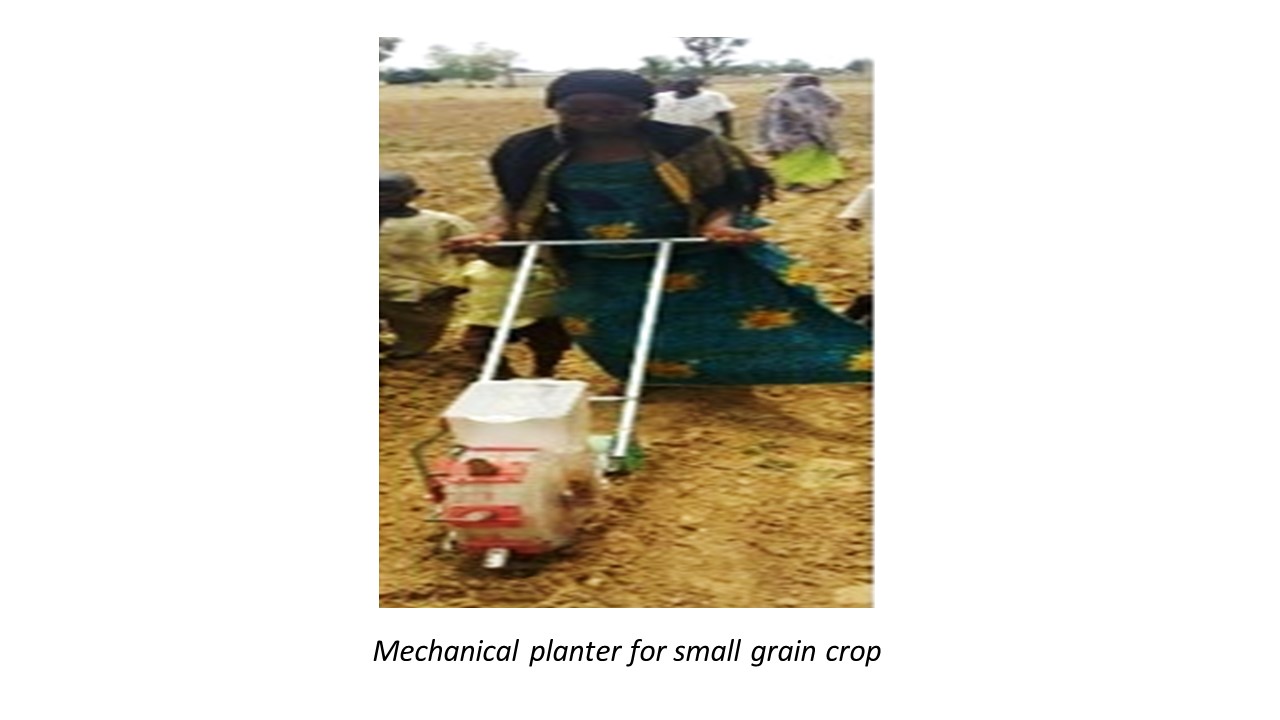Mechanized Tillers, Planters and Fertilizer Applicators
Summary
Farm activities such as land preparation, sowing and fertilizer application are largely performed by hand in small-scale millet and sorghum production systems. Farmers endure physical drudgery to cultivate their land and bear the cost of maintaining draught animals or services. Low and erratic rainfall in millet and sorghum growing areas narrow the window for planting without, intensifying labor demand. Recommended practices such as precision sowing and fertilizer micro-dosing are time consuming when performed by hand. These different factors counteract the intensification of agriculture on existing croplands and its expansion into new areas, which are needed to improve food and nutritional security. Mechanizing tedious farm activities is of key importance to decrease labor costs, allowing more timely field operations, improving crop productivity, and generating higher profits.
About the Solution
A large range of mechanized and motorized equipment is available that reduces the workload of farming for millet and sorghum producers. This includes walking-style power tiller, hand pushed planters, fertilizer applicator, small engine backpack brush cutters and paddle weeders, and power sprayer for applying chemical control agents. A power tiller has multiple uses. It performs shallow ploughing, rotavate to break large soil clumps, and build ridges and furrows for planting. Most walking-style tractors also pull carts for local transportation. Some also have power takeoff that connect to water pumps and threshers. A motorized planter and fertilizer micro-dose applicator, locally called “Sénékéla”, was developed by Institut d’Economie Rurale in collaboration with ICRISAT as an alternative for manual and animal-drawn seeders. It ensures precise and fast placement of seeds and mineral inputs on finely harrowed soils or pre-made ridges. Agricultural machinery requires skillful use to make investments financially viable. Sharing equipment through rental services provides access to larger numbers of farmers who would otherwise not be able to afford this equipment.
Small-scale mechanization of land preparation, planting and fertilizer application is suitable for farmers growing millet and sorghum limited access to markets and infrastructure. The ideal size of land for power tillers and motorized planters is between 0.25 and 2.5 acre (0.1 to 1 hectare), for larger farms a four-wheel tractor is better suited. Equipment can be purchased by individual farmers or their associations or obtained through rental or contract services.
The most efficient equipment is powered by internal combustion engines. The Sénékéla machine consists of a hopper containing the distributor disc, a four-stroke petrol engine of 6.8 HP and a 4-liter tank, two rear wheels that move the machine forward, and two front wheels that spin the distributor disc. Spacing between plant stands is adjustable and seed and fertilizer is placed in pockets at regular intervals by the distributor disc. A following skimmer and press wheel ensure that seed and fertilizer are adequately covered with soil.
Hand operated planters for millet and sorghum and fertilizer micro-dose applicators are readily fabricated by local metal workshops. Motorized tillers, weeders and planters are imported, mostly from China or India. The use of power tillers, weeders and motorized planters requires a trained operator to ensure safe and effective use. Every day the engine oil levels must be checked. Settings of the rotor blades must be adjusted according to the desired tillage depth and width. To construct furrows, an opener must be set according to space between planting lines. Clearing straw and stones from rotor blades is crucial to prevent jamming that may damage the engine. Using mechanical hand planter is simple when there are no large clumps of soil following ploughing and harrowing and can plant on either a level surface or on top of pre-made ridges. The seed meter must be regularly checked and calibrated to ensure appropriate spacing and planting depth. Metering devices of planters and fertilizer applicators play a vital role by distributing the inputs uniformly at desired rates and row spacing. Sowing a farm of one hectare requires walking 10 km. The machinery is lightweight so it is easily transported between fields. Maintenance of small-scale equipment is relatively easy, and many spare parts are locally available.
Commercialization
Commercially available
Solution Images
Institutions




